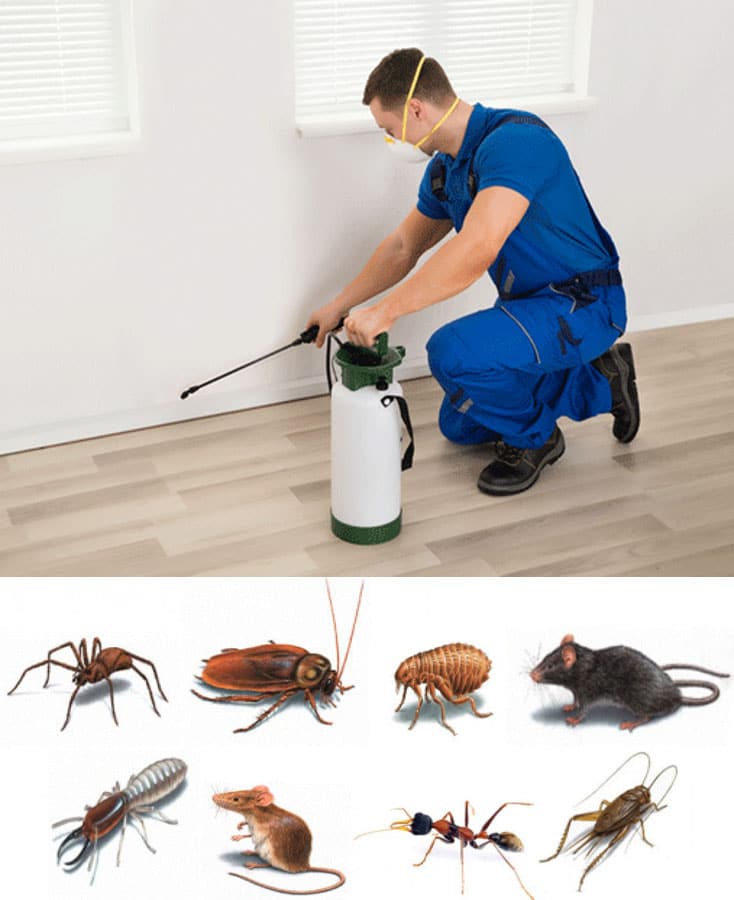Efficient A1 Bed Bug Treatment in Charlotte - Safe and Proven Approaches
Bed Bug Therapy Break Down: Contrasting Chemical Vs. Non-Chemical Solutions
In the realm of pest control, specifically when managing the persistent issue of bed bugs, the choice in between chemical and non-chemical therapy services can be a crucial one. Both approaches use distinctive advantages and downsides, influencing aspects such as performance, safety factors to consider, and general expense. By analyzing the nuanced information of each method, a clearer understanding of which course to go after in resolving a bed bug infestation can be obtained.
Effectiveness of Chemical Therapies
Chemical therapies for bed pest problems have actually been extensively recognized for their potent and fast efficacy in getting rid of these pests. When thinking about the efficiency of chemical treatments, it is critical to recognize that they can offer a fast and complete service to a bed insect problem.
Additionally, chemical treatments have the advantage of supplying recurring effects, indicating that they can remain to eliminate bed bugs even after the preliminary application. This recurring activity is particularly advantageous in combating any type of possible re-infestations. Additionally, the rapid activity of chemical treatments can bring alleviation to individuals facing severe bed pest infestations, allowing them to regain control of their space rapidly.
Safety And Security Concerns With Chemical Solutions
When using chemical options for bed bug therapy is making certain the security of occupants and the setting,One important facet that calls for careful factor to consider. While chemical therapies can be reliable in eliminating bed pests, they may present risks if not taken care of appropriately. Among the primary safety worries with chemical options is the prospective damage they can create to human health and wellness. Exposure to particular chemicals utilized in bed pest treatments can result in breathing issues, skin inflammation, or other adverse responses, particularly in people with pre-existing problems or level of sensitivities. Additionally, improper application or dose of chemical pesticides can cause harmful deposits sticking around in the cured area, presenting long-lasting health and wellness risks to owners.
Furthermore, the ecological impact of chemical solutions is another considerable consideration. Some pesticides utilized in bed pest treatments may be hazardous to advantageous bugs, wild animals, and environments if they leach into the dirt or water systems. It is important to utilize chemical treatments sensibly, following safety and security standards, and considering less toxic alternatives to reduce these dangers and make sure the secure and efficient administration of bed pest invasions.
Advantages of Non-Chemical Approaches
Thinking about the potential safety problems and ecological impact linked with chemical solutions for bed insect therapy, checking out non-chemical methods presents an termite control prices appealing choice with several unique advantages. Non-chemical methods use a much safer choice for households, specifically those with pets, people, or kids conscious severe chemicals. These methods get rid of the threats of exposure to harmful materials, reducing the potential for negative wellness effects. In addition, non-chemical treatments are ecologically friendly, as they do not contribute to air or water air pollution, making them a sustainable selection for bug control.
Additionally, non-chemical remedies can be efficient in targeting bed pests, consisting of hard-to-reach locations where chemical treatments may not pass through - A1 charlotte pest control companies. Approaches such as heat therapy, vacuuming, steam cleansing, and mattress coverings offer comprehensive obliteration without the use of unsafe chemicals.
Limitations of Non-Chemical Treatments

In addition, non-chemical treatments typically call for multiple applications to accomplish effective eradication. This can be lengthy and might not always ensure total removal of all bed insects and their eggs, especially in covert or hard-to-reach places.
Furthermore, the success of non-chemical treatments greatly counts on appropriate execution and thoroughness, which can be challenging for individuals without expert competence. Poor application of non-chemical approaches may lead to insufficient removal, bring about persistent invasions and the demand for added treatments.
For that reason, while non-chemical therapies have their benefits, it is important to acknowledge these constraints and consider them when figuring out the most reliable method for managing bed insect problems.
Expense Comparison: Chemical Vs. Non-Chemical Options
Provided the constraints connected with non-chemical treatments, a vital element to evaluate in the context of bed bug monitoring is pop over to this site the expense comparison in between chemical and non-chemical options. In comparison, non-chemical therapies like heat treatment or vapor can be much more expensive, with costs ranging from $1,000 to $6,000 for a whole home. While the initial cost of chemical treatments look at this now might seem lower, multiple therapies may be required to fully remove the problem, potentially raising the overall cost.
Final Thought

Taking into consideration the possible security issues and environmental impact linked with chemical options for bed bug therapy, checking out non-chemical techniques provides an encouraging choice with a number of distinctive advantages.Offered the restrictions linked with non-chemical treatments, a necessary facet to evaluate in the context of bed bug administration is the expense contrast in between chemical and non-chemical alternatives. In comparison, non-chemical therapies like heat treatment or heavy steam can be a lot more pricey, with prices varying from $1,000 to $6,000 for a whole home. While the initial cost of chemical treatments may seem lower, numerous treatments might be required to completely eradicate the invasion, possibly increasing the overall expense.In final thought, when comparing chemical and non-chemical bed insect treatment choices, it is crucial to consider performance, safety, advantages, constraints, and price.